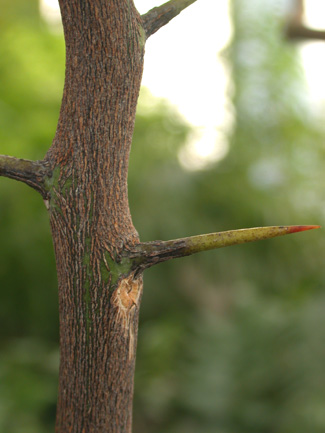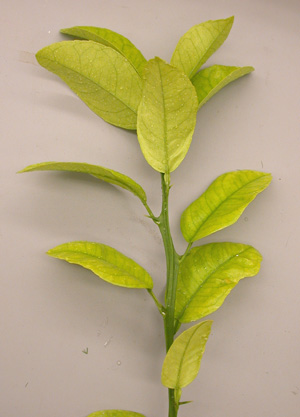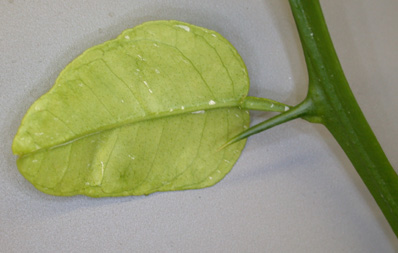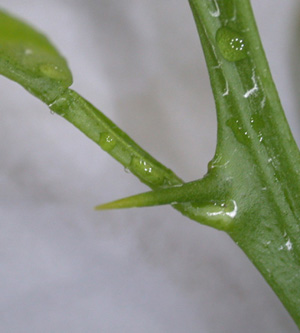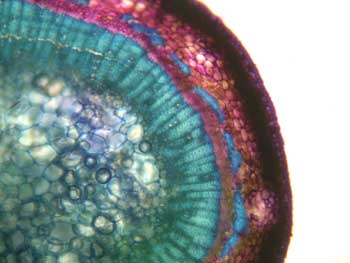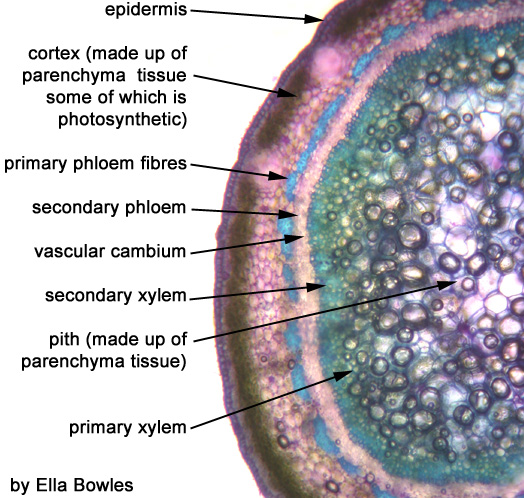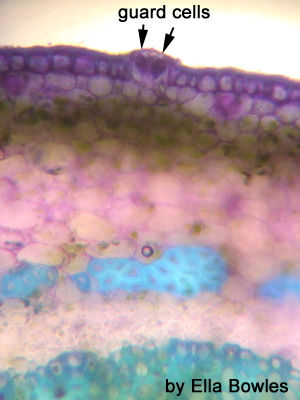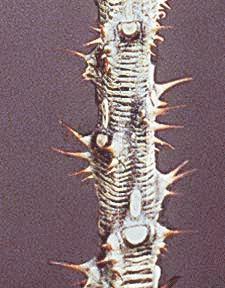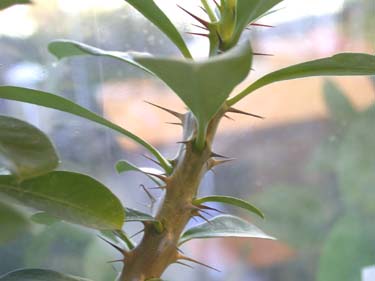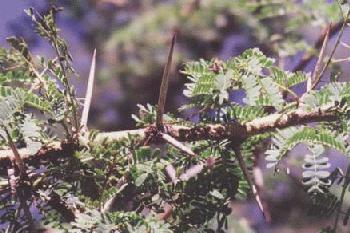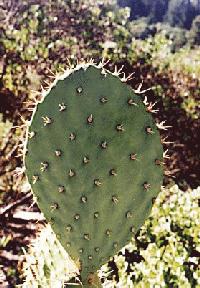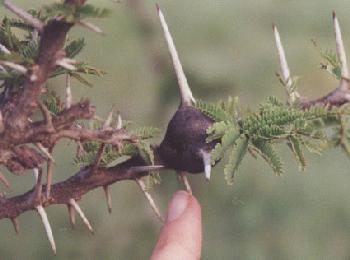PROTECTION
Stems or leaves and the epidermis of either stem or leaf may form hard, sharp defensive structures (thorns, spines, prickles) which reduce a plant’s chances of being eaten by herbivores. The modified organ may be dead or living at maturity, and in either case will bear little resemblance to the organ it originated from. You may determine whether a defensive structure is a stem, leaf or epidermal modification by observing its location relative to the leaves. A stem will arise in a leaf axil (modified stem = thorn); stipules, which are leaf accessories, will be found at the base of leaves (modified leaf = spine); prickles (epidermal modifications) will arise randomly, without reference to leaf origins.
Citrus medicata thorns
The thorns of Citrus can be pretty treacherous looking!
Thorns arise at the axils of leaves and are therefore considered modified branches.
As further evidence of this you were asked to make a cross-section through a stem and through a thorn. Here is a picture through the cross-section through the stem. Note the secondary vascular tissue (pith in the middle).
The cross-section on the right is a section through the thorn. You see also secondary vascular tissue. What would you expect to see if this was a prickle or part of a leaf?
This is a good slide to review the tissue types and regions of a secondary stem. Before you continue see if you can identify the secondary xylem, secondary phloem, primary phloem, pith, cortex, and epidermis.
This is a great slide of the cross-section through a thorn…labeled too!!!!
Even thorns can have stomata!
Euphorbia (Crown-of-Thorns) spines
The sharp-pointed processes on Euphorbia emerge from the stem.
A pair of spines emerges at the base of each leaf, just as stipules would. These spines represent stipule (leaf) modifications.
Rubus discolor – blackberry
This weed is very prickly! It has prickles over its stems and petioles.
The prickles are actually a modification of the epidermis and have no vascular tissue within. Another clue is that they are randomly scattered over the stem; not associated with leaves or branches.
Acacia xanthophloea – fever tree
Note the position of the leaves relative to the defensive structures of this Acacia found in parts of Africa. Again we see two ‘spines’ associated with each leaf and therefore they represent modified bracts (leaves). Interestingly, this species (A. xanthophloea) is found in swampy areas where mosquitoes breed, and early settlers were convinced that the tree was the cause of malaria. This gave the common name ‘fever tree’.
[photo by Charlene Mason, 1998.
Opuntia
This cactus also has modified leaves which act as defence organs. The green modified stem is not only imporant because it is photosynthetic, but it is also important for storing water.
Acacia drepanolobium – whistling thorn
The common name for this plant is misleading – the defensive structures are not thorns, they’re spines. This species of Acacia has an additional protective mechanism. The plant forms galls (pictured here) naturally and ants make a small hole into these structures. The ants lay their eggs inside the galls and tend the larvae. In return for a daycare, the ants will attack the snout of any animal that tries to eat the plant, protecting it from harm.
[photo by Charlene Mason, 1998]
PROTECTION

